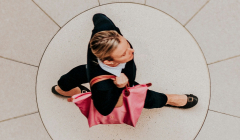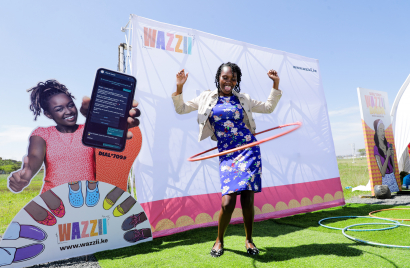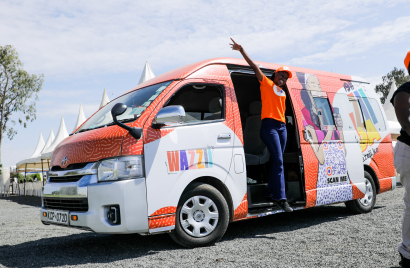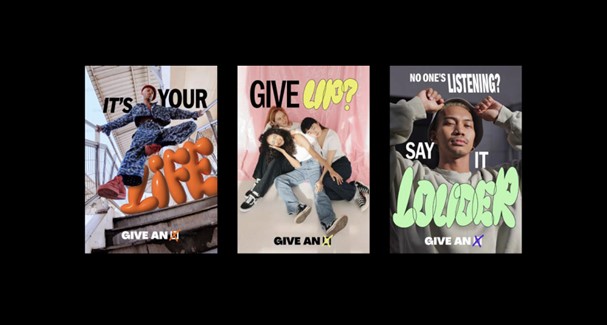
Supporting women through the messy middle of their careers
International Women’s Day may well be over, but progressive agency leaders remain focused on supporting women at every stage of their careers.

Listening to and learning from young people can help brands achieve more authentic inclusion

Over the last few years, inclusivity and accessibility have slowly made their way into becoming household names in the creative space. And rightly so, because we can’t create brands that resonate if they aren’t considerate of people’s unique and varying needs. Whether it’s through alt text becoming common practice on social media or Web Content Accessibility Guidelines (WCAG) becoming a default in UI/UX design, being inclusive is finally top of mind in the creative industry.
But like with any “new” flashy insight, many brands are happy to jump on the bandwagon by doing the minimum and calling it a day. Consumers, however, have learned to see through inauthentic attempts of wokeness and performative ‘washing’ – especially young people. So if brands genuinely want to participate, they need to put in actionable effort and commit to what it means to build truly inclusive and accessible spaces. We can’t let inclusivity and accessibility become just another buzzword in the same way sustainability was thrown around so much it’s completely lost its meaning.
Don’t hide in fear of potential backlash and cancel culture.
Geli Luna (She/Her) Associate Design Director, Shape History
Now, I know what you’re thinking…charities, NGOs and the non-profit sector aren’t typically the source of creative inspiration, and neither do they have a reputation for being branding trailblazers. But in my years at Shape History, building brands with global organisations and movements driving social impact, one thing stands out. Young people. So what can we learn from the third sector’s approach to youth inclusivity?
It may seem obvious, but the first step in fostering inclusivity is embedding it into your process. Focus group discussions and interviews are the go-tos, but we try to go further with genuine co-creation of brands and campaigns. Many of our partners (we call clients ‘partners’ at Shape History) want to reach young people with their work. And we’ve found the most effective way to engage them is to do it from the get-go.
Last year, we worked with global non-profit Girl Effect to build a brand for young Kenyans to learn about sexual health access services and open up conversations on taboo topics. Making a sexual health service appealing is challenging enough, but even more so for young people whose culture doesn’t allow for open dialogue on the topic.


So, we went straight to the source. We held co-creation workshops with a diverse group of young girls from both urban cities and rural villages in Kenya, and one afternoon of brainstorms and creative presentations gave us insights that completely shifted the preconceived ideas we came in with. The result was an overwhelmingly successful brand called Wazzii that reached over 5 million young Kenyans in its first 3 months. How? It looked ‘cool’, spoke their language, and accounted for their diversity. None of which would have been possible if it weren’t for the insights unearthed when we allowed the youth to draw, moodboard and ideate.
The key to attracting any audience is to meet them where they are. Embed yourself in the subcultures they already subscribe to and if you do it right, you can influence them to act on things they may not have cared about. Take voter registration – you hear about it so much it’s almost background noise; and especially in 2024’s historical year for global elections, campaigning for anything is easily drowned out. So, how do you cut through the noise?
We recently launched Give An X, a voter registration campaign for – and by – young people in the UK. Everything around the brand – from name to messaging, visuals and activations – was positioned as a youth campaign rather than a political one. Its overly colourful, graffiti-esque aesthetic and 3D typography let it seep seamlessly into the media already consumed by young people. The activations and partnerships with Ben and Jerry’s, Lime and Love Island stars were designed to reach different youth subcultures. And again, we couldn’t have got there without the passionate group of young people who co-created the campaign. A brand can reach otherwise alienated or excluded audiences by hearing from them and understanding where to meet them.

Young people are attuned to the hollow capitalist agendas constantly thrown at them and they are quick to call out what isn’t going to cut it. Don’t hide in fear of potential backlash and cancel culture. Instead, get ahead of it by encouraging these voices early on and open up the discussion to young people who represent different demographics, whether in age, ethnicity, gender, abilities, and neurodiversity. Provide them with the opportunity to speak to their unique experiences in a group, allowing for healthy (potentially uncomfortable) conversations and preventing echo chambers. A few of our partners like SheDecides and Girl Effect have implemented youth accountability panels that recruit young people worldwide, all of whom are compensated for their time whether it’s to attend meetings, brainstorm campaigns, or test ideas. A brand or campaign will rarely please everyone but putting in the effort to understand and consider different lived experiences will go a long way.
Young people will challenge your beliefs and open up new possibilities for your work. But making space for them makes space for voices that often go unheard or ignored. To truly commit to inclusivity in our creative work, we must embed it into our creative processes, welcome diverse perspectives, and foster genuinely inclusive conversations.
Geli (she/her) runs the design team at Shape History, the social impact communications agency. Whether through spatial experiences, creative ideation, or visual storytelling, she believes in the power of design in shaping everyday life. Her first foray into brand design won her a D&AD Pencil, which led to her specialising in branding and creative comms. As Associate Design Director at Shape History, she has led the brand evolutions of global institutes, including Grassroots International, CIFF, and Women Deliver, and developed campaigns for organisations like Girl Effect and SheDecides. Her creative passion lies in using design for good.
Looks like you need to create a Creativebrief account to perform this action.
Create account Sign inLooks like you need to create a Creativebrief account to perform this action.
Create account Sign in